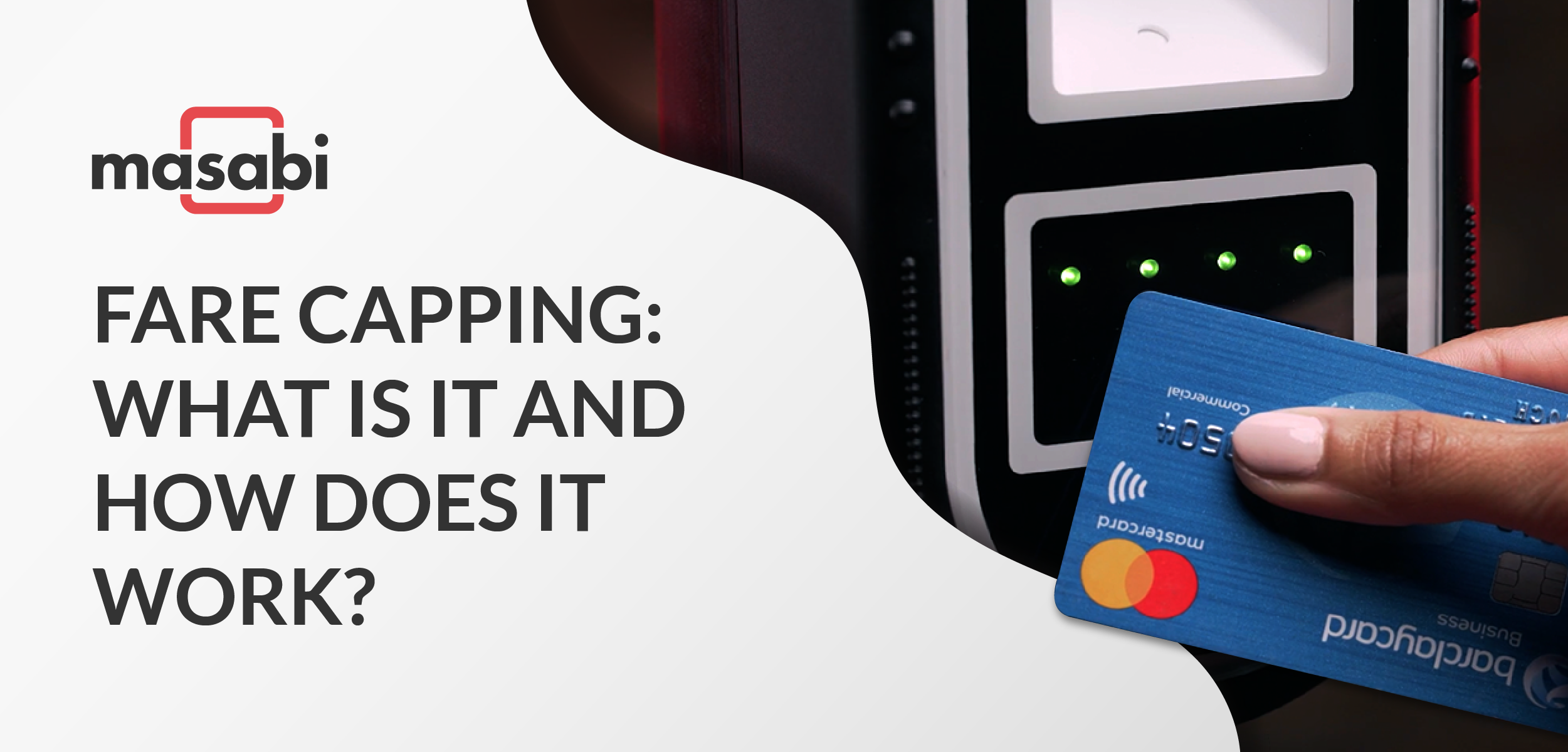At its simplest, fare capping rewards all riders for traveling by automatically providing ‘period passes’ based on how much they ride/spend over periods of time without needing to purchase them upfront.
A period pass, season ticket or travelcard is a ticket which lasts for a defined amount of time, giving users a discount on their travel, like a monthly, weekly or daily ticket.
This means that riders who typically prefer to pay for individual bus tickets as and when they ride (or those who can only afford to do so) get exactly the same benefits as passengers who pay upfront for a discounted period pass or travel card.
So under a fare capping system, a local transit agency or transport operator democratises access to transport and delivers social equity for all passengers by removing the cost barriers associated with paying upfront for a period pass.
Here’s how it works in practice: if a single journey costs $2.50 and a day pass costs $5.50, once a regular rider has paid for two journeys ($5) within 24 hours, the third journey within that timeframe will only cost the rider $0.50 – and once that has been paid – their travel for the rest of that period is free.
Similarly, if a weekly pass costs $25, once the rider has made 10 single journeys within a 7-day period (10 x $2.50 = $25), all of their journeys for the rest of that week will be free.
So under a fare capping system, the rider who pays separately for each individual journey will pay no more than someone who pays in advance for a period pass.
Benefits of fare capping for passengers:
- Guarantees best fares for riders so they are never overcharged for their journeys
- Removes the stress and anxiety of trying to work out the best value ticket to buy, particularly important for passengers whose travel patterns tend to be spontaneous or unpredictable
- Facilitates flexible fares which is great post-Covid!
Benefits of fare capping for transit agencies:
- Helps fulfill obligations to social equity and accessibility of best fares for all without discrimination
- Incentivises greater use of public transit
- Helps reduce dwell time at bus stops as more riders ‘tap and ride’ using smart cards or their mobile phone
- Agency retains ability to set fare cap parameters
Fare Capping: how it works
There are two ways to enable fare capping for agencies. Pre-purchase fare capping and fare capping with Account-based Ticketing.
Pre-purchase fare capping is most often (if not always) deployed using mobile ticketing. Passengers buy tickets as they normally would (in advance).
When they board the bus, the ticket is displayed within the app on their smartphone for inspection – either manually via the driver – or via automated validation hardware.
The passenger continues to buy tickets and use them as they travel until they reach a period pass threshold – at which point the app will ‘cap’ the fare at the appropriate amount and give them a ticket for the rest of that travel period.
With fare capping using Account-Based Ticketing, riders use either their smartphone, smartcard or contactless bank card to simply ‘tap and ride’ seamlessly around the network. The back office system automatically calculate the best fare for each journey and charges the rider based on usage up to period pass thresholds after which the fare is ‘capped’ and travel is free for the remainder of that period.
|
Model |
Tokens |
Riders |
Ticket experience |
|
Pre-purchase Fare Capping |
Mobile only |
Mobile users only |
Purchase tickets in advance |
|
Account-based Ticketing Fare Capping |
All tokens (Smartphones, smartcards, contactless bank cards.) |
All riders |
Simply tap |
Fare Capping example
Stephanie works three days a week but her employer sometimes needs her to work overtime and cover colleagues’ shifts at short notice and she is also studying part-time at the local college.
In a standard week, Stephanie would buy separate tickets for her journey except Thursdays, when she buys a daily period pass to cover journeys to and from work and college.
When Stephanie’s boss calls her to cover extra shifts at short notice, she needs to pay for extra journeys, but she doesn’t know how many extra shifts she may get at the start of the week.
In a typical week, Stephanie makes two return trips to work plus a daily pass for work and college on a Thursday. Each journey costs $2.50 and the daily period pass costs $5.50, so she typically spends $15.50 a week on travel. If she works three extra shifts, the cost of buying individual tickets increases to $28.00.
A weekly travel pass would cost $25, so with the extra shifts, it would be cheaper to buy the pass, but Stephanie doesn’t know whether she will get those shifts in advance.
Under fare capping, Stephanie doesn’t need to worry about whether she should buy a weekly travel pass – or whether she will get those extra shifts. Nor does she have to pay for the daily travel pass upfront on Thursday.
With Account-Based Ticketing solution, the back office systems will automatically work out whether she would be better off buying individual tickets, a daily, weekly or a monthly pass, and charge her account accordingly based on usage, saving Stephanie both time and money and allowing her to focus on work and study rather than worrying about getting best value.
Fare Capping in practice
The Greater Dayton Regional Transit Authority introduced Account-Based Ticketing via its Tapp Pay touch-free payment solution in February 2021.
This allowed smartphone users to tap and ride around the city while Masabi’s Justride back office systems calculated the best value fares.
No matter how many essential trips a customer takes throughout a given day or rolling 31-day period, they will never pay more than the price of a daily or monthly pass, rewarding passengers the more they travel. In Dayton, customers are capped at $3 daily and $30 within a rolling 31-day period by using Tapp Pay.
Validation of tickets is carried out automatically using Masabi’s Justride Validator units (JRVs), which have been installed onboard RTA’s bus fleet.
Brandon Policicchio, Dayton RTA’s Chief Customer & Business Development Officer explained the benefits to riders of switching from a cash-based fare payment system:
“Traditional transit fare systems have created a situation where customers who are least able to afford the upfront costs of a monthly pass end up paying more, but also end up traveling less by the end of the month.
“This development is the last piece of the puzzle of our work with Masabi, bringing fare equity to our customers with this technology, and offering them a convenient and contactless method of riding our services.”
To learn more you can download the Dayton RTA case study.
Interested in learning more? Request a call with Masabi
Further reading:


